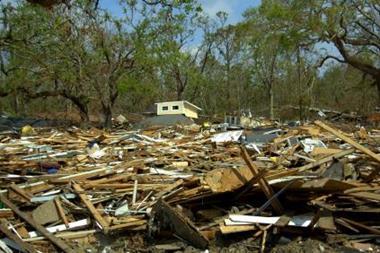Opinions differ on the ferocity of this year's Atlantic hurricane season
Ten, 13, 16 or 17; they’re the number of tropical storms the North Atlantic could face in 2007, according to the world’s most eminent forecasters.
At one end of the scale the Met Office has opted for caution revealing there are likely to be 10 tropical storms during the June to November season.
Scientists at Colorado State University, on the other hand, have predicted 17 named storms, nine of which will be hurricanes.
The Met Office’s steer towards below-normal activity may be in line with the latest climate model suggestions of fewer storms in future of increased intensity.
But, their opinion differs from that of their counterparts, including the National Hurricane Centre in the US and London’s own Tropical Storm Risk (TSR), who believe there is a significant probability of an above-normal Atlantic hurricane season this year.
If last year’s predictions are anything to go by then who could argue with the predictions of the Met Office?
While insurers braced themselves for 2005 mark II, on the back of overwhelming evidence from the likes of TSR and the National Hurricane Centre, the Met Office again distanced itself from the pack and said there would be 10.7 tropical storms. In fact there were nine.
Indications of what is likely to unfold over the North Atlantic in the coming months will be of obvious use to insurers, but after the popular prediction of an active hurricane season “turned out to be false” last year, less reliance will surely be placed on forecasters.
As chairman of Lloyd’s, Lord Levene, insists, the market must continue its focus on underwriting for profit.
Improved seasonal modelling now used by the Met Office, which produce more accurate data using laws based on physics rather than traditional statistical patterns or past behaviours, is likely to be welcomed by an industry so exposed to the natural elements.
But, whether there are 10 or 17 storms in 2007, what the industry really wants to know is how many will actually hit landfall? That question is unlikely to be answered until the storm shows its real intentions.
As the Met Office quite rightly points out, tropical storms are not high on the agenda of most people in the UK, but to the City they represent a significant risk.
In 2005, Lloyd’s estimated its losses to be £2.9bn as a result of the three biggest hurricanes, Katrina, Rita and Wilma, in the Atlantic season alone.
Few would want a repeat of the “three ugly sisters”, but some insist a more active season from last year’s would help keep the market on its toes, help tame capacity levels, rate movement and underwriting discipline.
If the wind does decide to blow in 2007, the market is certainly geared up to soak up the additional damage and emerge from the season relatively unscathed.
Lloyd’s decision to return to the debt markets, successfully raising £500m of Tier 1 perpetual subordinated debt, has further strengthened the Central Fund.
Combined with healthy balance sheets as a result of a benign hurricane season in 2006 and come what may the market is suitably prepared, forecaster predictions or not.
































